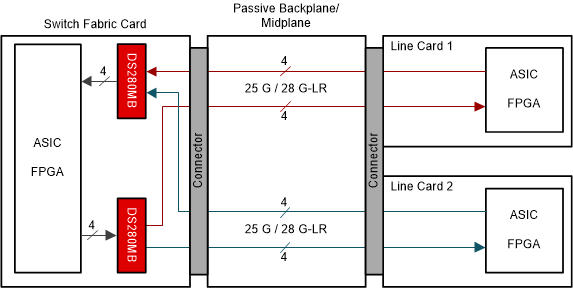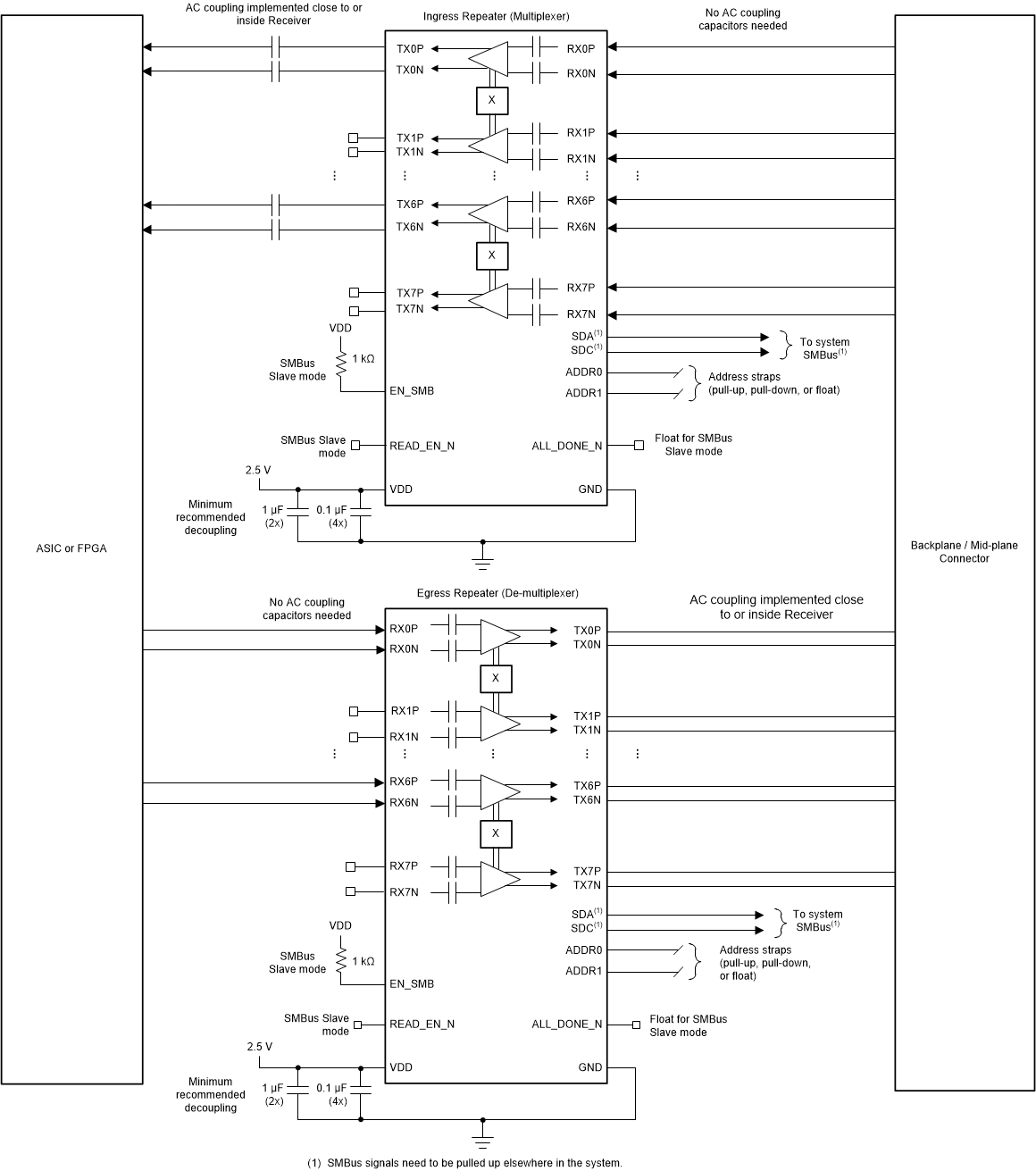SNLS542C October 2016 – December 2020 DS280MB810
PRODUCTION DATA
- 1 Features
- 2 Applications
- 3 Description
- 4 Revision History
- 5 Description (continued)
- 6 Pin Configuration and Functions
- 7 Specifications
- 8 Detailed Description
- 9 Application and Implementation
- 10Power Supply Recommendations
- 11Layout
- 12Device and Documentation Support
- 13Mechanical, Packaging, and Orderable Information
Package Options
Mechanical Data (Package|Pins)
- ZBL|135
Thermal pad, mechanical data (Package|Pins)
Orderable Information
9.2.1 Backplane and Mid-Plane Reach Extension
The DS280MB810 has strong equalization capabilities that allow it to equalize insertion loss and extend the reach of backplane channels by 17+ dB beyond the normal capabilities of the ASICs operating over the channel. The DS280MB810 is designed to apply gain in a linear fashion. Whenever system design constraints allow, the DS280MB810 should be placed with the higher loss channel segment at the input and the lower loss channel segment at the output; however, since the DS280MB810 operates in a linear fashion, it can also be used in applications where the lower loss channel segment is at the input and the higher loss channel segment is at the output. Figure 9-3 shows a typical backplane and mid-plane configuration using the DS280MB810 to perform equalization and signal distribution for failover or redundancy. Figure 9-4 shows the corresponding simplified schematic for this application.
 Figure 9-3 Typical backplane and mid-plane application block diagram
Figure 9-3 Typical backplane and mid-plane application block diagram Figure 9-4 Typical backplane and mid-plane simplified schematic
Figure 9-4 Typical backplane and mid-plane simplified schematic